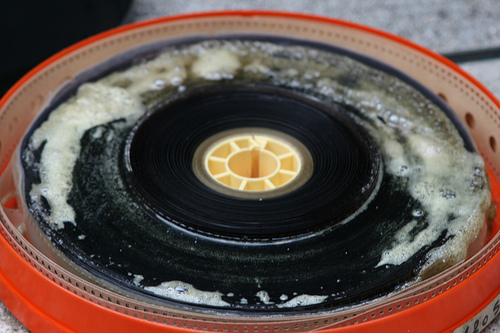Chris Ferrer
Advanced Imaging Solutions
The Microfilm Depot
1776 N Pine Island Road, Suite 222,
Plantation, Florida 33322
786-985-2047 Office
954-806-7842 Cell
sales@mdepot.com
 Vinegar Syndrome And The Adverse Effects It Has On Microfilm And Microfiche
Vinegar Syndrome And The Adverse Effects It Has On Microfilm And Microfiche
By Chris Ferrer
It is the dread of many film collectors. The tiniest hint of that acrid smell that can only be attributed to vinegar hits them as they enter their film room or as they are perusing through their collection. With so much time, money, and love involved in the gathering of these films people will do almost anything to try to prevent and protect their heart felt films. The first step would be to truly understand Vinegar Syndrome and the adverse effects it has on microfilm and microfiche.
Early microfilm and microfiche were made of cellulose acetate which, over time, actually break down or decompose into acetic acid. This acid is what actually causes the vinegar smell. The first instance of this was noted way back in 1948 which was within a decade of its introduction into use.
The long molecular chains of cellulose are attached to the acetyl in the films. Over time and exposure to heat, moisture and acids this acetyl breaks away from the cellulose bonds and then the acetic acid develops. There is a distinct pattern and it almost aways follows it.
When the acetyl initially begins to deteriorate the acetic acid is released which results in the vinegar smell. Then the plastic base that the film uses becomes brittle. This happens in stages and progressively worsens as time goes on. Finally it gets to a point where the slightest tension or bend will cause the film to tear and or rip.
Then can occur the dreaded shrinkage once the polymers begin to be damaged. This shrinkage can be as drastic as ten percent. As a reference, professional motion picture films that have shrunk even just a single percentage can render them unusable. Shrinkage alone can render a film “un-runnable” through the projection apparatus.
When the acetate polymers begin to shrink the gelatin of the films do not which causes buckling and bending. In the later stages of the syndrome there can be sever buckling damage. This is known by many familiar with he process and film as “channeling”.
Then, what appears to be several liquid filled blisters will appear on the films. These are actually crystalline deposits and these result when plasticizers that are used in production become incompatible with the whole and begin to ooze out to the surface of the film.
Finally, normally colorless dyes that are used in the manufacturing process (known as antihalation dyes) can themselves mutate and bee seen as yellow and blue tinges within the film.
There are several different methods to protect a person’s collections. Various storage and rescue procedures are available and offer detailed instruction. However for some these steps may be impractical or prove to be expensive.
Over all Vinegar Syndrome and the damage it causes to microfilm and microfiche is a violent destruction. No one who collects and is a lover of films wants this to happen, but it does. There are more advance microfilms available today but when dealing with older forms this could propose quite a bit of danger.
